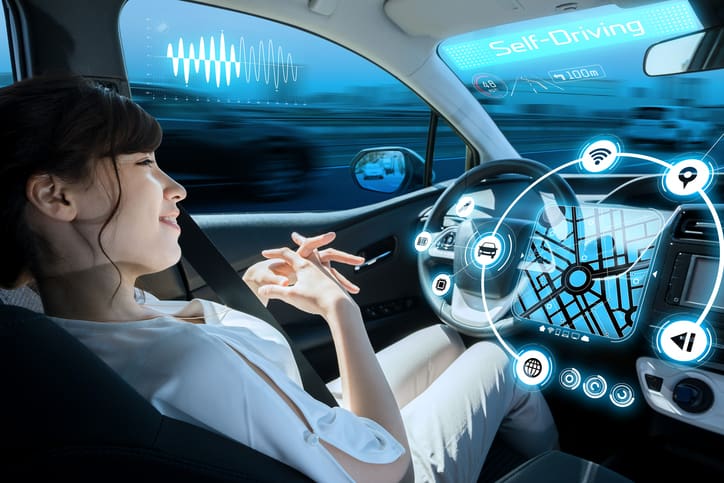
How will Driverless Cars Affect the Insurance Industry?
 Year after year, cars are equipped with more and more automated features and crash avoidance technology. In fact, many of today’s high-end vehicles and increasingly, mid-priced ones, already have options, such as blind-spot monitoring, forward-collision warnings and lane-departure warnings. These are the bits and parts of tomorrow’s fully self-driving vehicles.
Year after year, cars are equipped with more and more automated features and crash avoidance technology. In fact, many of today’s high-end vehicles and increasingly, mid-priced ones, already have options, such as blind-spot monitoring, forward-collision warnings and lane-departure warnings. These are the bits and parts of tomorrow’s fully self-driving vehicles.
In theory, human error causes most car crashes, so giving control of the moving vehicle to automation is expected to drastically reduce highway fatalities. The insurance aspects of this gradual transformation are at present unclear, however. As this technology gradually becomes standard equipment, insurers will be able to better determine the extent to which these various components reduce the frequency and cost of accidents. Liability laws might evolve to ensure they keep up with autonomous vehicle technology advances.
Experts vary as to when the changeover to self-driving cars will occur. One transport scholar at the University of Minnesota believes that by 2030 every car on the road will be driver-less, whereas another report from the Highway Loss Data Institute (HLDI) suggests that it could take as long as three decades for 95 percent of all registered cars to be equipped with crash avoidance systems. According to the Insurance Institute for Highway Safety (IIHS), it is anticipated that there will be 3.5 million self-driving vehicles on U.S. roads by 2025, and 4.5 million by 2030. However, the institute cautioned that these vehicles would not be fully autonomous, but would operate autonomously under certain conditions.
A survey by IEEE, of more than 200 experts in the field of autonomous vehicles found, when respondents were asked to specify the year in which some of today’s commonplace equipment will be removed from mass-produced cars, the majority said that rear view mirrors, horns and emergency brakes will be removed by 2030, and steering wheels and gas/brake pedals will follow by 2035. Among the major automakers testing self-driving cars are Audi, Ford, Mercedes, Nissan, Tesla, Toyota and Volvo. Technology companies including Apple, Waymo, Lyft and Uber are also considerably invested in testing autonomous vehicles.
IIHS and HLDI gathered data already showing a reduction in property damage liability and collision claims for cars equipped with forward-collision warning systems, especially those with automatic braking. On the other hand, in July 2016 the first of three fatalities (the two others in 2018) involving a semi-autonomous vehicle was reported when a collision between a Tesla Motors Model S with Autopilot technology and a tractor trailer led to the death of the Tesla’s owner. Tesla said Autopilot sensors failed to detect the truck, turning in front of a Model S, against a bright sky. The National Highway Traffic Safety Administration concluded that the crash did not result from a flaw in the system, but that the system lacked safeguards to prevent its misuse. The study which looked at fatalities involving 2011 model year cars over a year of operation, found that there was an average of 28 driver deaths per million vehicle car years through 2012, down from 48 deaths for 2008 model cars through 2009. Eight years ago, there were no models with a zero death-rate. This IIHS study attributed the lower death rate to the adoption of electronic stability control, which has reduced the risk of rollovers, and to side airbags and structural changes that improve occupant safety. This does not, however, remove the risk of an accident since events are not totally predictable and automated systems can fail. The transition from hands-off driving to hands-on promises to be tricky, at best.
Some aspects of insurance will be impacted as autonomous cars become the norm. There will still be a need for liability coverage, but over time the coverage could change, as manufacturers and suppliers and possibly even municipalities are called upon to take responsibility for what went wrong. Product liability laws might incorporate the concept of cost-benefit analysis to mitigate the cost to manufacturers of claims, according to a 2014 RAND report. As cars become increasingly automated the onus might be on the manufacturer to prove it was not responsible for what happened in the event of a crash. That liability issue may evolve so that lawsuit concerns do not drive manufacturers and their suppliers out of business
While the number of accidents is expected to drop significantly as more crash avoidance features are incorporated into vehicles, the cost of replacing damaged parts is likely to increase because of the complexity of the components. It is not yet clear whether the reduction in the frequency of crashes will lead to a reduction in the cost of crashes overall.
Automobile ownership also appears to be on the decline, and more people in urban areas are opting for public transportation and shared rides. Using technology available today, cars may be parked away from the center of the community in a location from which they can be summoned by phone, and may belong to a company, municipality or other group. Makes one wonder, when all cars are self-driving, whether anyone will even own a car.
